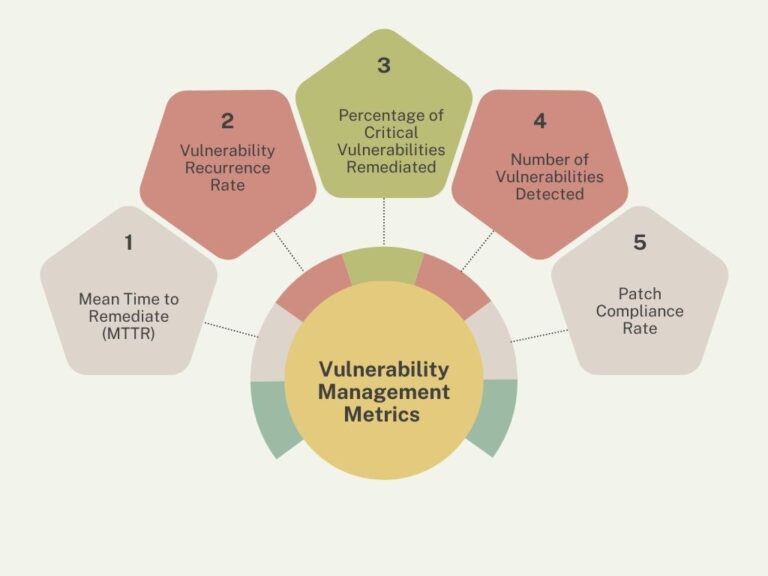Understanding Vulnerability Management Metrics: A Guide to Safer Systems
As technical risks in digital space continue to morph, organizations find themselves under increasing pressure to put in place measures to ensure their systems and data are safe. Yet in which ways can you say that the efforts you put in are successful? This is where vulnerability management metrics are useful. Alongside security posture assessment, the proper metrics allow the companies to image the potential for security readiness and enhancement of which they may have not been aware. Let’s explore the reasons behind these metrics being so important and the ways you can deploy them in your business

What Are Vulnerability Management Metrics?
The vulnerability management metrics are measurable data and they assist organizations to measure and improve the processes of identifying, evaluating, and resolving the vulnerabilities discovered in the vulnerability scanning process. These metrics indicate the success of the process and hence also the efficiency and effectiveness of the program
Why are they important? basically without metrics that are clear, you have no idea how evaluate the process which may lead to a false sense of security. Another key point is that the process may exist but if it is ineffective or a vulnerability takes too long to be remediated then the organization is in a greater risk for zero-day attacks and consequently a security incident e.g. data theft or ransomware attack
Key Vulnerability Management Metrics You Should Track
- Mean Time to Remediate (MTTR)
This is the time it takes to fix a vulnerability after it’s discovered. A shorter MTTR is a good indicator to the effectiveness and efficiency of the process. For example, if a company’s MTTR is 10 days for critical vulnerability, but the benchmark is 5 days, then there is a big room for improvement to minimize the window for a zero-day attack.
- Vulnerability Recurrence Rate
How often do the same vulnerabilities occur? High recurrence rates may indicate systemic issues, such as inefficient patching process or issues in the patch management solution used. Lowering this metric certainly shows improvement in the process.
- Percentage of Critical Vulnerabilities Remediated
Another key metric it percentage of vulnerabilities remediated. This metric measures how well you manage the most serious vulnerabilities within your environment. A high percentage indicate a good risk management.
- Number of Vulnerabilities Detected
A higher detection rate often is an indicator to a good and effective vulnerability scanning process. It is important to pair it with remediation metrics to enhance the effectiveness of the process by remediating the identified issues.
- Patch Compliance Rate
Are your systems patched and up to date? This metric measures the percentage of assets that have applied the latest patches. For instance, an enterprise achieving a 95% patch compliance rate is accordingly reducing its exposure to known threats.

Real-Life Example: A Retailer’s Journey to Better Security Metrics
A large retailer struggled with high MTTR and a low patch compliance rate, leading to several near-miss incidents with ransomware. Although they had a process in place, but it was not effective. They implemented SolarWinds Patch Manager. It works with and extends Microsoft WSUS and Microsoft Endpoint Manager to patch both physical and virtual servers in addition to workstations. As a result, they reduced their MTTR by 40% and achieved a 90% patch compliance rate within six months.
Additionally, this shift not only improved their security posture but also boosted customer confidence, as the retailer could confidently demonstrate their commitment to protecting customer data.
How to Get Started with Vulnerability Management Metrics
Are you prepared to enhance your program for managing vulnerabilities? This is a basic road map:
• Determine Relevant Metrics: Select metrics that are in line with your company’s goals and regulatory requirements.
• Leverage Automation: To collect and respond to data effectively, use tools such as vulnerability scanners , remediation platforms and patch management solutions.
• Establish Benchmarks: To monitor progress, compare your measurements to past performance or industry norms.
Communicate the outcomes: Provide important stakeholders with metrics to demonstrate improvement and accordingly support security expenditures.
Why Metrics Matter to Your Organization’s Success
In the matter-of-fact vulnerability management metrics is a good indicator of the effectiveness of your cybersecurity program. Accordingly tracking these metrics keeps your organization’s security in check. Are you addressing vulnerabilities quickly enough? Are you prioritizing effectively? Metrics can answer these questions and more.
What vulnerability management metrics does your organization track? Have you encountered any challenges in improving them?
You can certainly transform vulnerability management from a compliance checkbox to a strategic advantage by concentrating on relevant and actionable KPIs. By having KPIs for the process and continuous improvement means increased governance and as a result mature process that reaches level 5 on the maturity model
Start measuring, start improving, and stay secure!

